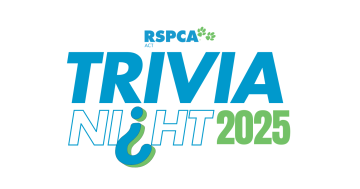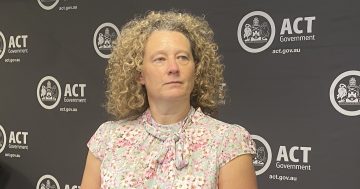
Patrons enjoying some social interaction at the Royal Hotel this week. Photo: Royal Hotel Facebook.
Tighter restrictions will be placed on the number of people allowed in NSW pubs from today (14 July), but the owner of one pub in Queanbeyan says the implications won’t be major.
The news comes as fresh outbreaks of COVID-19 in Sydney has meant that the local government areas of Liverpool and Campbelltown have been declared COVID-19 hotspots by the Queensland Government.
There have been 13 new cases of the virus in NSW in the past 24 hours and a further 270 in Victoria.
The declaration means any non-Queensland residents who have visited, or are visiting, the Campbelltown and Liverpool areas will not be allowed entry into Queensland from midday today.
In response to the outbreaks, group bookings at pubs in NSW will be halved from 20 to a maximum of 10, while larger venues will be limited to no more than 300 patrons.
The measures will also include stricter requirements for venues to take contact details of patrons and tougher regulations on pub cleaning.
While the NSW Government will announce the tighter restrictions later today, it is expected the restrictions will only affect pubs and not clubs.
The fresh outbreaks in Sydney, which began at The Crossroads Hotel at Casula in western Sydney, and the continued spread of the disease in NSW and Victoria, is feeding talk that NSW may be heading towards a Melbourne-like second lockdown.
Publican of the Royal Hotel at Queanbeyan, Anthony McDonald, told Region Media the capacity there is capped at 250 people, meaning that the restrictions will have minimal effect.
“The major impact for us will be the group bookings of greater than 10, so we’ll need to get on the phone today for all of those who have made bookings and advise them of the recent changes,” Mr McDonald said.
“For the most part, there won’t be too much of an implication for us, as we can only get 250 people under the one-per-four square metre rule.”
He said there have been a lot of Canberrans crossing the border to the pubs in Queanbeyan and numbers in the venue have been “brisk and strong”. However, he doesn’t hold high hopes that the restrictions will ease again.
“I was looking forward and thinking that we may go to one person for every two square metres, but that’s a shot duck now.
“I suspect that the current restrictions are the best it’s going to get in a long while, to be honest. We’re still in better shape than the Canberrans, of course.”
Back across the border in the ACT, a spokesperson for Health Minister Rachel Stephen-Smith said the ACT Government has been in close contact with their counterparts in NSW and Victoria to monitor the situation there.
If there is no spike in coronavirus cases in the ACT, the government will look to announce moving towards the intended easing of restrictions by next Friday (24 July).
“We’re still in a relatively good position here in the ACT, and this point we are not looking to further tighten the current level of restrictions here,” the spokesperson said.
“We are still pausing on the move of easing restrictions to stage three, but that will depend on the updates from hotspots in NSW and Victoria.”
Next week ACT Chief Health Officer Dr Kerryn Coleman is expected to announce details of a checkpoint report that will determine if the ACT moves to stage three restrictions.
“Obviously, we’ll make decisions as we need to if something does change in the meantime,” the spokesperson said.
There have been no new cases of coronavirus recorded in the ACT in the past three days following record levels of testing that peaked when more than 1050 people presented themselves for testing at the Garran, EPIC and Weston Creek sites. This was the highest level of weekend testing since the start of the pandemic in March.
Meanwhile, fewer Australians reported feeling personal stress, anxiety or loneliness as COVID-19 restrictions began to ease in late June, according to the latest data issued by the Australian Bureau of Statistics (ABS).
Head of Household Surveys Michelle Marquardt said the seventh Household Impacts of COVID-19 Survey, carried out between 24 and 29 June, before the reinstating of restrictions in some parts of the country, showed how Australian’s mental health had recovered once restrictions were eased.
The proportion of people reporting feeling restless, nervous or overwhelmed in June 2020 fell to rates similar to the 2017-18 National Health Survey.
“This survey showed 24 per cent of respondents reported experiencing one or more sources of personal stress in June compared to 43 per cent in April.
“Now that some parts of the country are either having to reinstate some restrictions or put a pause on easing them, it will be important to understand what impact this is likely to have on people’s mental health,” said Ms Marquardt.













